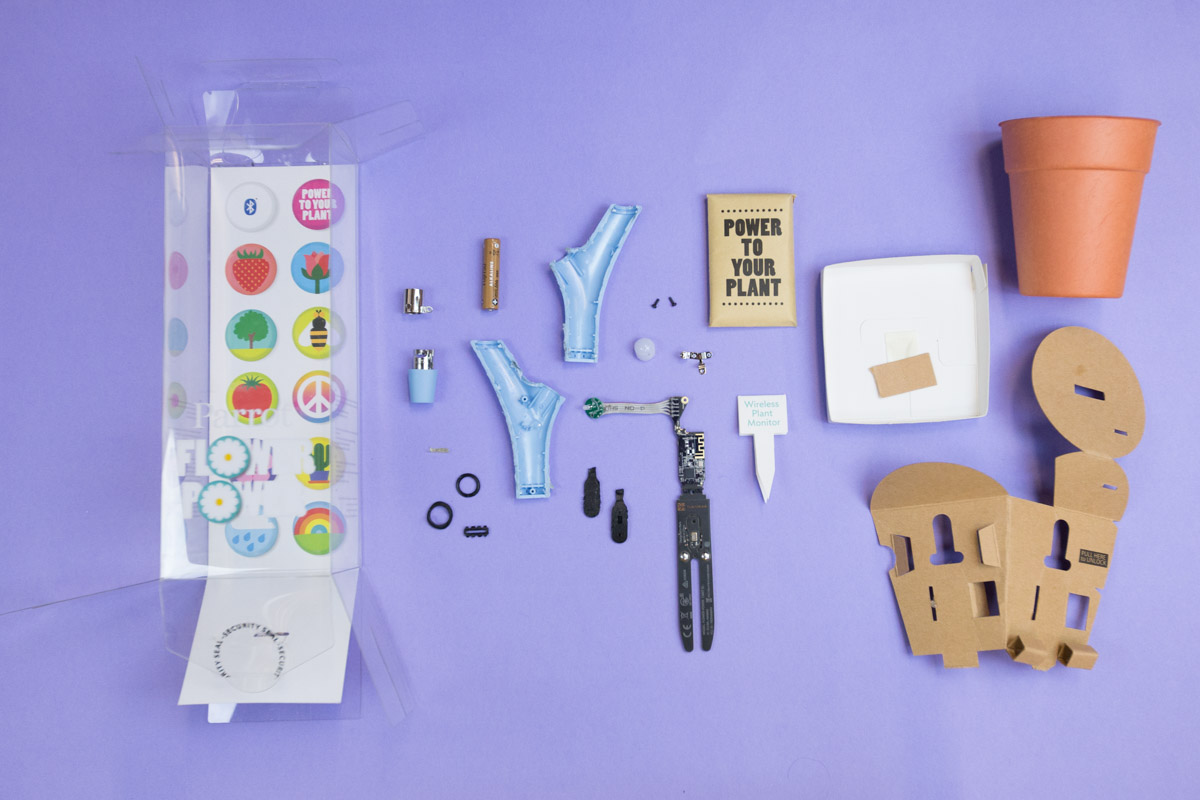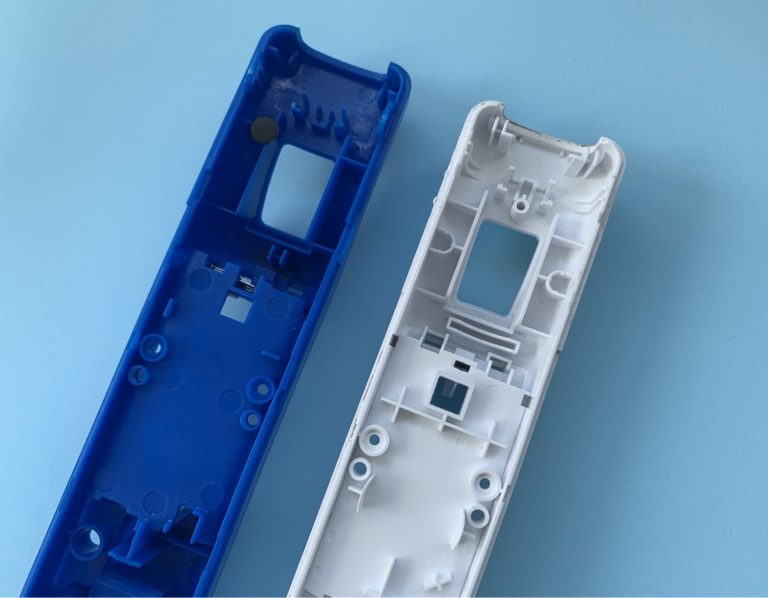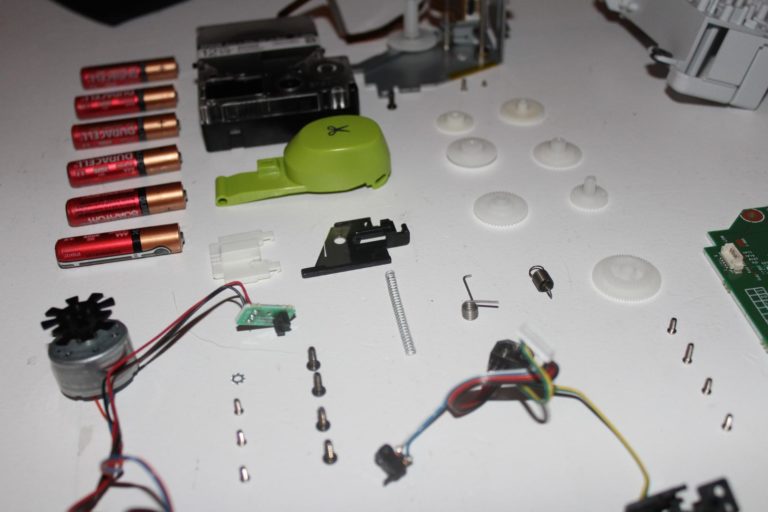Flower Power is an environmental monitor that you stick in the soil of a potted plant. It measures 4 things: sunlight, temperature, fertilizer, and moisture. Powered by a replaceable AAA battery, it’s water resistant and good for indoor and outdoor use.
The company behind this product, Parrot, hails from France and makes a diverse lineup of products: drones, bluetooth headsets, headphones, and GPS tablets. Flower Power is unlike anything in their traditional line up, but no doubt they have more than enough engineering talent to make products in the Smart Home or Internet of Things category.
Packaging
The outer packaging is a clear PET folded carton with a shallow cardstock tray glued to the bottom. PET carton is a great way to showcase your product on the shelf, helping it stand out from competition.
PET cartons are printed, die-cut, creased, and shipped flat to the assembly factory and then folded at the time of packaging. It’s widely available and inexpensive.

The sensor is held by a paper pulp “flower pot” and cardstock “soil”. The “soil” piece hides some clever origami beneath the surface.

There is even a garden label that serves up quick on-boarding instructions. Parrot’s packaging designers have killed us with cuteness.
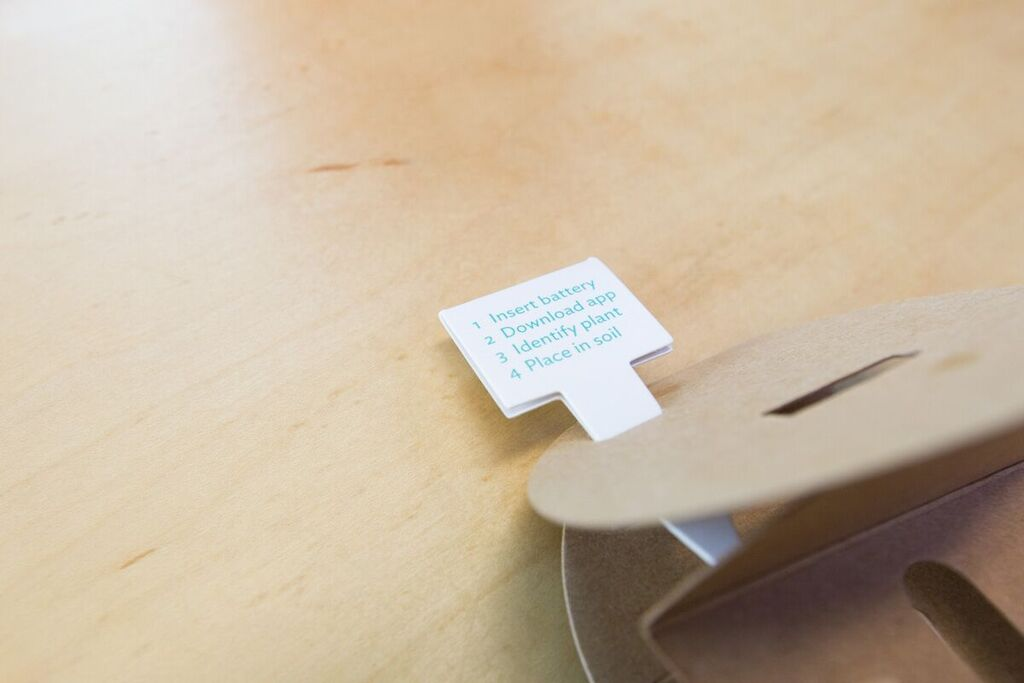
This packaging gets an A+ in environmentally friendliness in my book: there’s just PET plastic, card stock, paper, and bits of adhesive. Everything is easily separated and recyclable.
Flower Power
Moving on to the construction of the Flower Power itself:
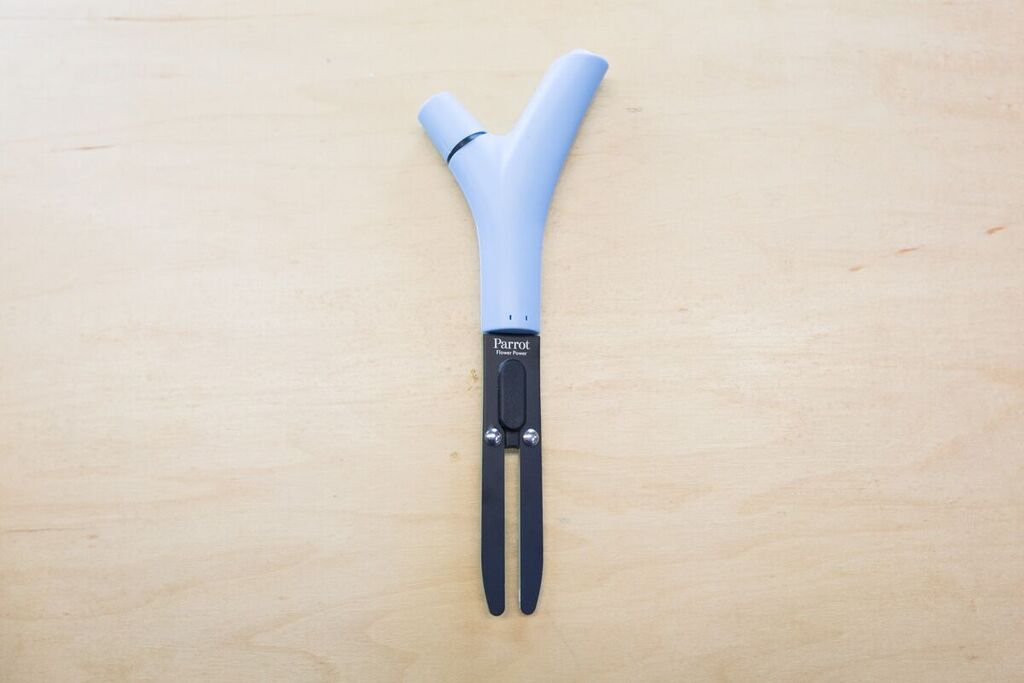
You’re supposed to stick the entire black lower section into the soil near your plant. A closer look reveals that it’s actually a multi-layer PCB that extends out from the sprout-shaped blue section. It doesn’t quite look like a conventional PCB, because there are no exposed copper traces and pads.
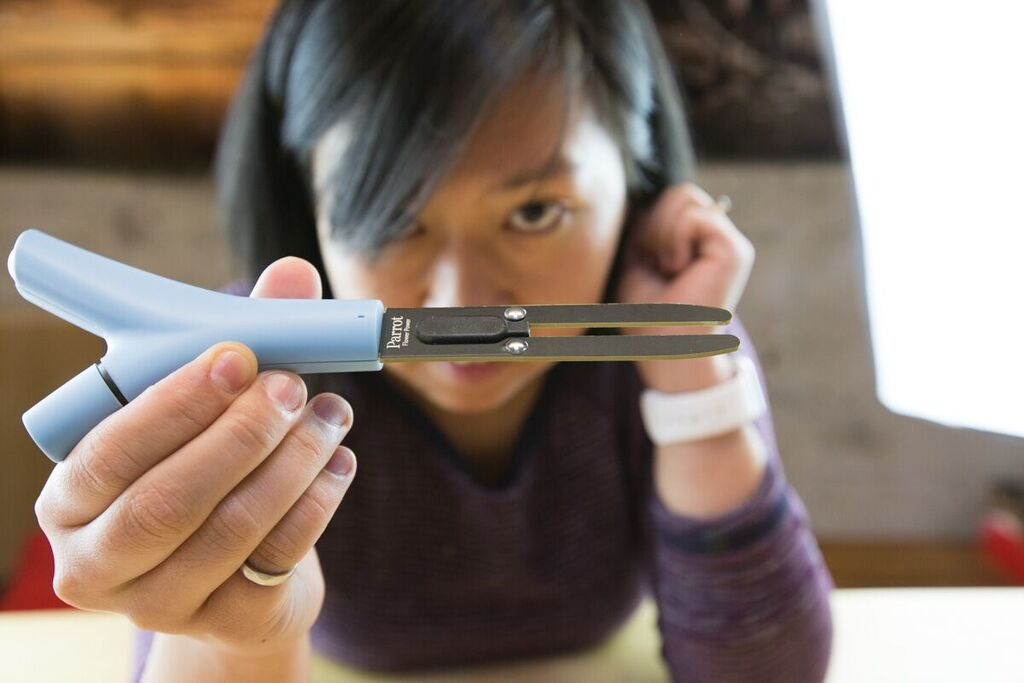
There is a seam running along the blue “sprout,” but the plastic enclosure halves are ultrasonically welded together. This assembly method is commonly found on products that need to be watertight.
Nothing can stop our Dremel though!
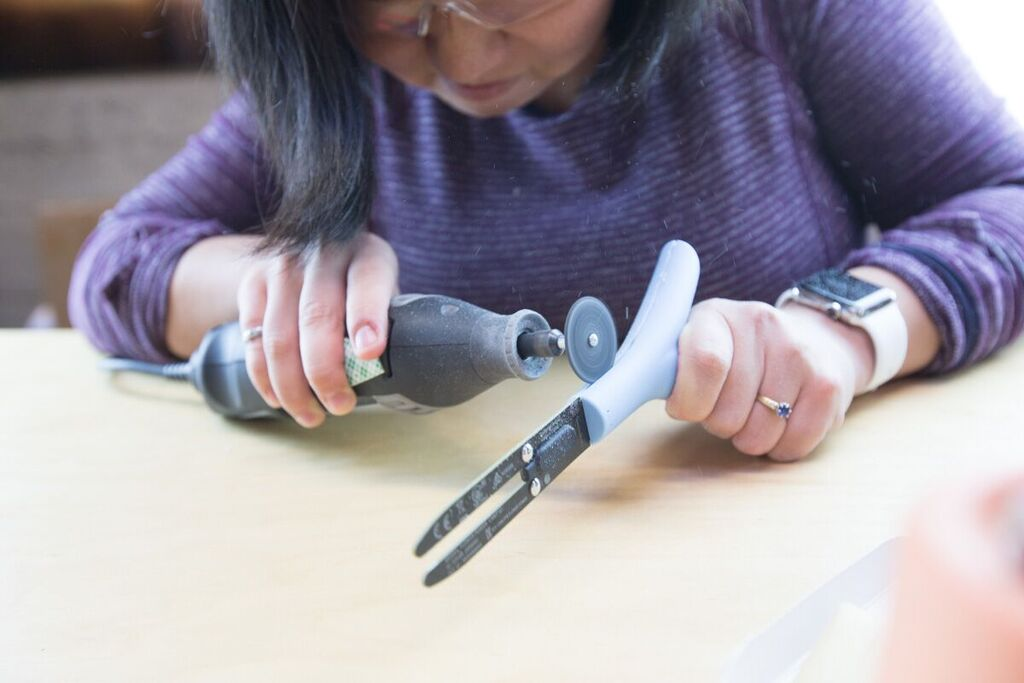
After we bisected the enclosure, we found just two PCBAs, two screws, three polyurethane gaskets, and three sheet-metal parts. Jaw-droppingly elegant.
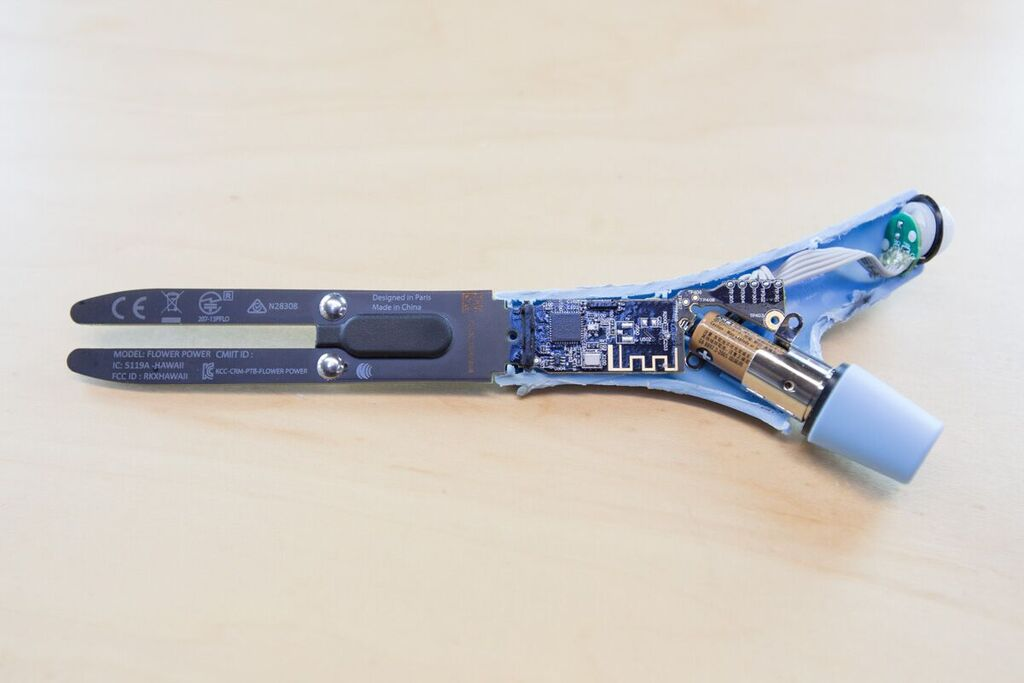
It’s worth noting that the only moving part in Flower Power is the twist-off battery compartment. The less components there are, the easier it is to waterproof. Moving parts can be a pain to waterproof.

Two sheet metal “barrels” are used to hold the battery. A third sheet metal part connects the battery’s positive terminal to a pad on the main PCBA. Sheet metal spring contact is a great way to conduct electricity without soldering or using expensive connectors.
This part is heat staked to the plastic enclosure, eliminating the need for messy adhesives, and fasteners would be overkill for this application.

The gaskets (pictured below) are placed where the plastic enclosures can’t be welded together, such as around the light sensor window, the battery cap, and between the enclosure and the main PCBA. Using gaskets is a tried-and-true waterproofing technique.

The main PCBA holds most of the goodies: MCU, antenna, and some of the environmental sensors. The finish on the PCBA indicates that there is a conformal coating, which is a super thin polymeric film used to protect circuitry against moisture and dust.
The system’s brain is a TI CC2540 Bluetooth Low Energy microcontroller.
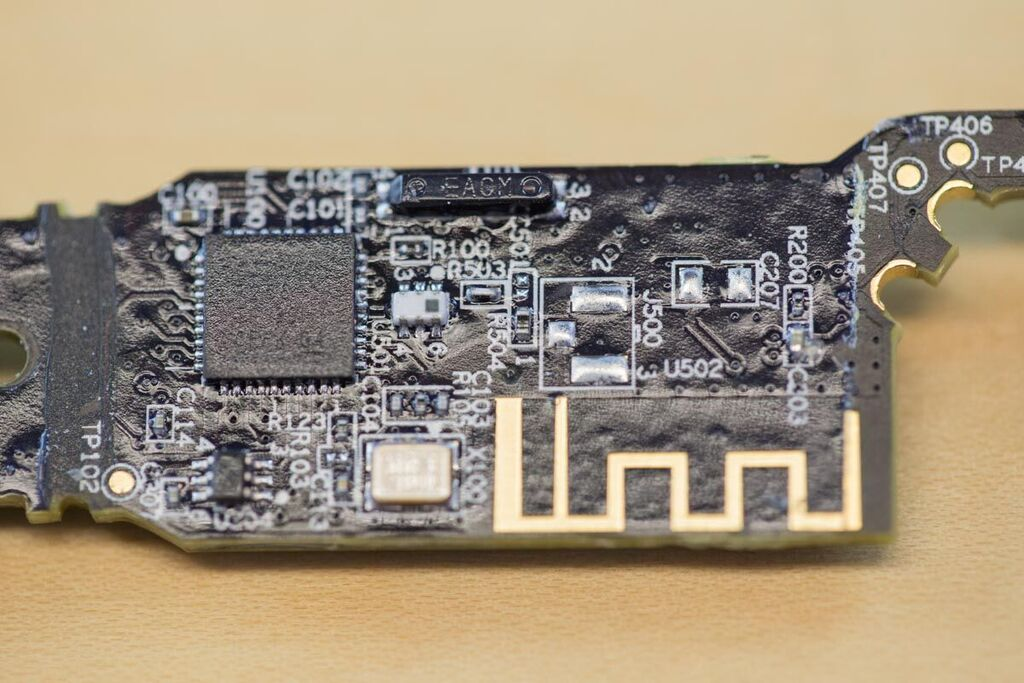
There is also a thermistor for sensing air temperature on the other side of the board (bottom right; L202).

On the exposed section of the PCBA, the two PCB prongs measure moisture of the soil between them.
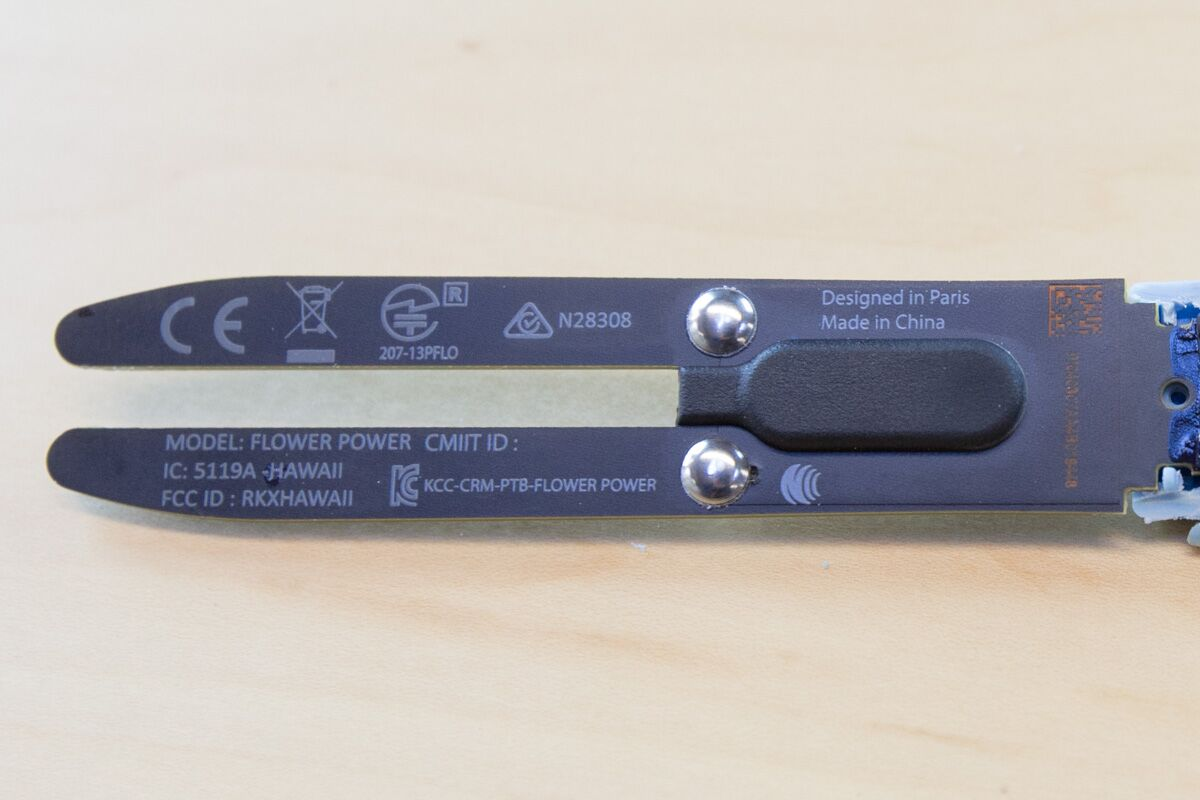
How does this work you ask? Science time!
The prongs and the soil act together as a capacitor that completes a circuit. The soil is the dielectric of the capacitor, while the prongs are the parallel plates.
The capacitance is directly related to the dielectric permittivity, also known as the dielectric constant. This value is between 3 and 5 for dry soil and it’s about 80 for water. Therefore, changes in the soil’s moisture content substantially change the dielectric permittivity of the soil. The whole circuit’s output changes as a result, which gets converted to a moisture percentage in Flower Power’s accompanying app.
The two metal domes sense fertilizer levels by measuring electrical conductivity. However, this only works when the plant gets watered because dry soil is not conductive.
Fertilizer level is roughly indicated by the amount of ions in the soil that then gets dissolved in the added water. Electrical conductivity of water increases as the number of ions in water increases. In fact, the Flower Power app shows fertilizer level in deciSiemens per meter (dS/m), a unit for electrical conductivity.
The ambient light sensor is mounted on a small peripheral PCBA. A ribbon cable connects the light sensor board to the main PCBA by through-hole solder. Again, no connector — that costs money!
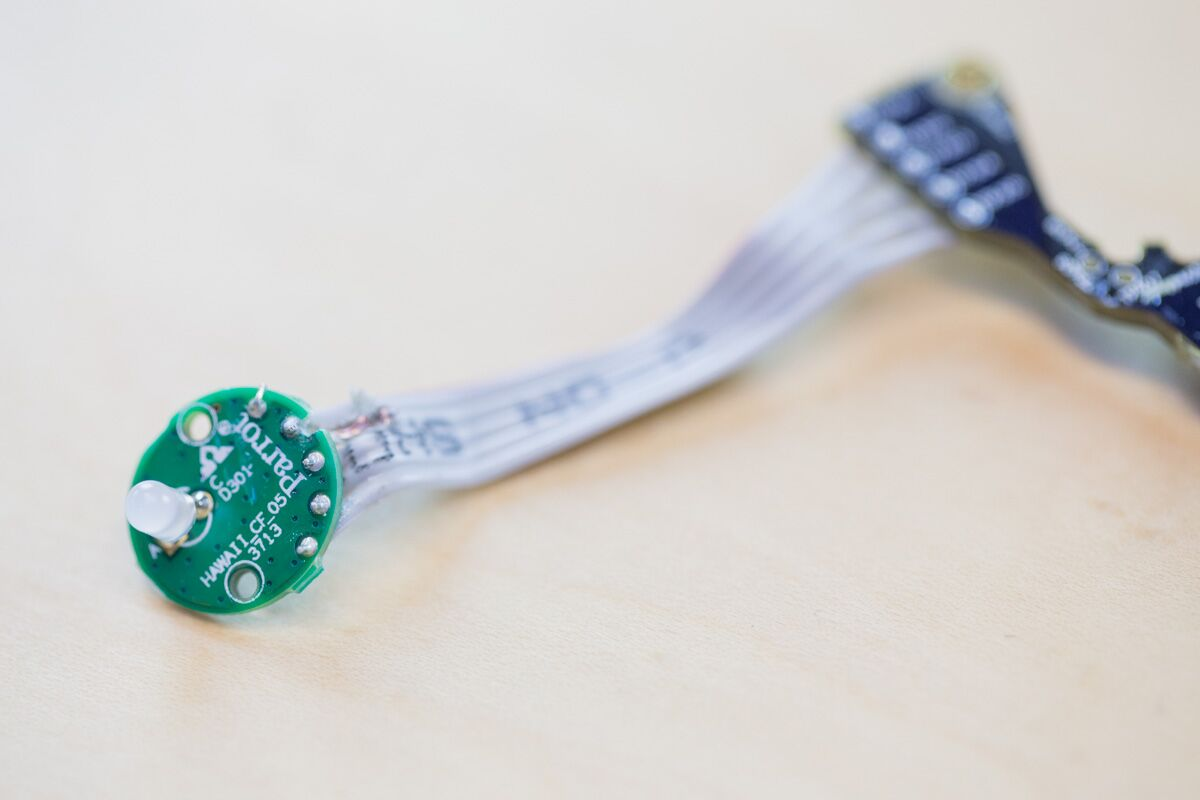
Flower Power retails for $59.99 (on sale for as low as $32.07). For a low-cost consumer product like this, minimizing part costs and simplifying assembly are key to making a healthy profit. Flower Power has done that superbly.
The beauty of Flower Power is in its simplicity, both inside and outside!
